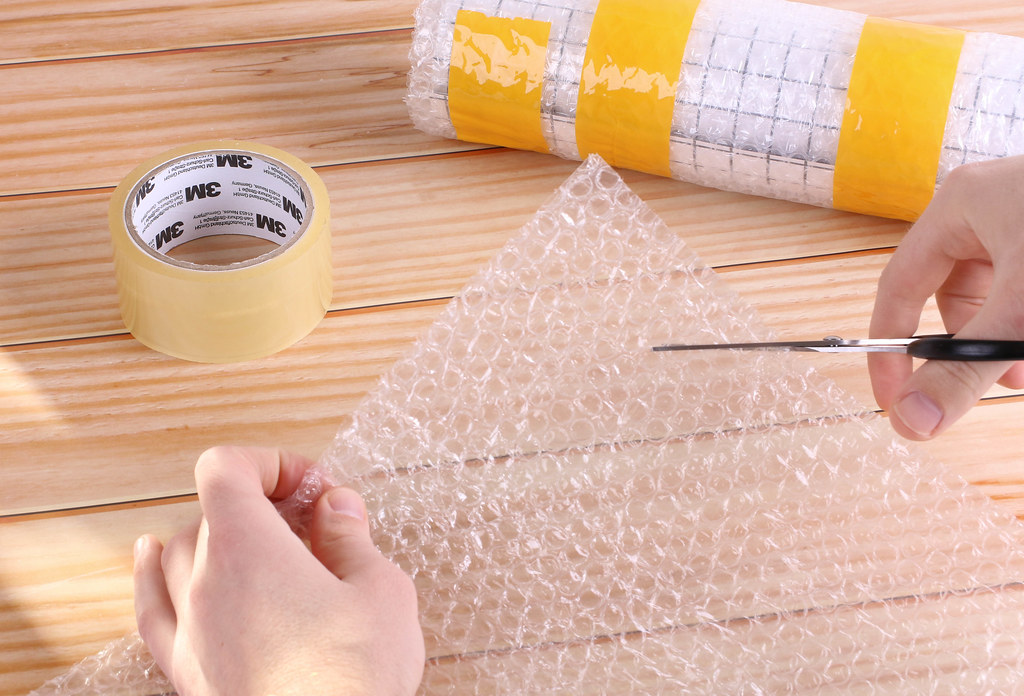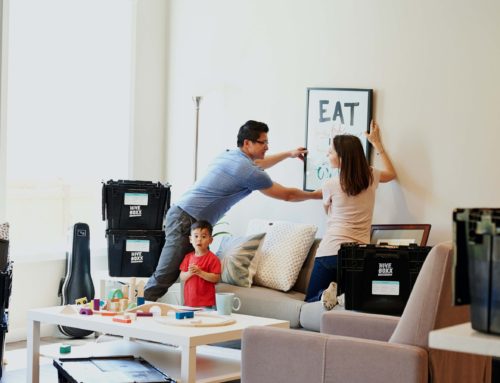
Bubble wrap is a moving staple. It is easy to use, provides an extra cushion, protects against scratches, and keeps dust and dirt off wrapped items. It’s also relatively inexpensive, and you can save it for your next move or when you need to ship a package. We teach you to pack smart: use bubble wrap!
What you may not know, however, is there’s a right way—and a wrong way—to use it. Use it the right way, and it’s one of the best packing materials there is. Misuse it, and you could forfeit all the protection it offers or, worse yet, wind up damaging some of your belongings’ surfaces. Before your next move, make sure you know how to use bubble wrap to get the most protection for your treasured belongings.
Why Bubble Wrap?
Bubble wrap offers flexibility and cushioning. Here’s why it is one of the best packing materials for your move:
- Easy to use: It is one of the most accessible packing materials to use. Wrap it around an object and secure it with tape. Because it is flexible, it fits snuggly around almost any item, regardless of shape.
- Protective: Air trapped inside two fused plastic sheets make up bubble wrap. Additionally, it keeps out dirt, dust, and moisture. It can also prevent items from scratches, chips, or breaking.
- Weightless: It adds almost no weight to your boxes since it’s air, making items easier to lift.
- Reusable: You can store it for your next move or use it as packaging material to mail an item. It won’t take much space since you can roll it or keep it in sheets.
When to Use Bubble Wrap
You can use bubble wrap to cushion almost any item when packing for a move. You’ll especially want to use it when filling valuable, fragile, and odd-shaped objects. Consider using it when packing:
- Stemware and chinaware
- Wall art and mirrors
- Flat-screen TVs
- Computer screens
- Decorative items
- Vases and lamp bases
- Glass tabletops
- Sharp edges or corners
First, you’ll need to wrap the item in the paper, then bubble wrap. You may need to use packing paper depending on the item, as bubble wrap can leave marks on computer screens, TV screens, and glass surfaces. Also, you’ll want to fill a hollow thing, like a vase, with crumbled packing paper for additional support before wrapping the item in bubble wrap.
Bubble Wrap Types
It comes with air bubbles ranging from ¼” to 1″. The most common size is 0.4″. Typically, smaller bubbles protect items from scratches, while more giant bubbles protect things from impact. Given the nature of a move, err towards purchasing it with more giant bubbles since it can also protect against scratches.
There are also different types of bubble wrap. The pink-colored, anti-static type protects electronics from the static electricity that can fatally damage them. In addition to standard, you’ll find it in a heavy-duty weight with larger with more durable bubbles and in an anti-static form. If you use regular bubble wrap on your computer, a static charge can build and ruin it.
Use Bubble Wrap Right Side Up
When working with bubble wrap, the bubbles should face inward, touching the item you are wrapping. Not only does this offer more cushioning, but it also reduces the chance of bubbles popping during the move. Additionally, the textured, bubble side of the wrap grips the item, holding it in place.
Having the flat side out also makes it easier to tape the bubble wrap and write on the wrapped surface.
How Bubble Wrap Works for a Move
Before getting started, set up a workspace on a flat surface and gather your supplies. You’ll need:
- Bubble wrap
- Packing paper
- Packing tape
- Scissors
- Boxes
- Markers
Start by assessing the item: wrap glass items and any item with a screen in packing paper. Similarly, open things that need additional support from crumpled packing paper or newspaper before wrapping with bubble wrap.
Roll the item up tightly, securing it with a piece of tape along the side and at the ends. Next, place the item on a sheet of bubble wrap long enough to encircle it at least twice. Then, label it, and put it in a box. Heavier items should form the base of your package, while you should pack lighter, more delicate items at the top.
Items with odd shapes may require a little extra effort. For example, a wine glass requires extra padding around its weakest point—the stem. Wrap several layers of bubble wrap around the stem to secure it in place. Once the branch has adequate protection, add packing paper to the glass itself and wrap the entire glass in bubble wrap.
You may want to add extra paper for padding between bubble-wrapped items in each box before sealing it. Label the box, and mark it “Fragile.”
Are you packing a mirror, artwork, or a flat-screen TV? Besides wrapping the item in paper first, so the bubble wrap doesn’t leave marks, make sure you use the correct box. A box that fits your artwork or TV’s dimensions offers the best protection, regardless of how much bubble wrap you use.
What to Do After the Move
Because bubble wrap is durable, you don’t have to toss it after a move. Instead, save it for your next move or use packing materials when you need to ship a box. You can also donate it to others in the process of moving or recycle it. Most recycling centers will accept it even if your new hometown doesn’t take it curbside.
Planning to Move?
Let someone else do the work for you. Professional movers can adequately pack all of your belongings. Call Belleair Storage today for professional mover recommendations!


